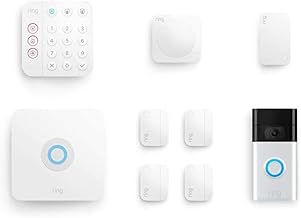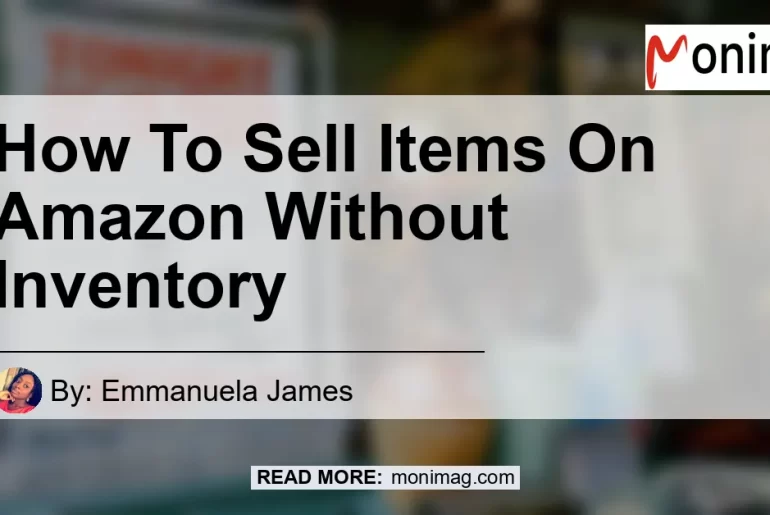

Selling on Amazon has become a popular way for individuals and businesses to start their own online retail operations. However, many aspiring sellers are deterred by the thought of holding inventory and managing shipping logistics. The good news is that there are methods to sell on Amazon without the need to handle physical products. In this comprehensive guide, we will explore two primary methods: dropshipping and utilizing Amazon’s Fulfillment by Amazon (FBA) service.
Dropshipping: A Method for Inventory-Free Selling
Dropshipping is a business model that allows sellers to list and sell products on their online stores without ever physically handling the inventory. When a customer places an order, the seller passes the order details to a third-party supplier who then fulfills the order by shipping the product directly to the customer. This way, sellers can focus on marketing and customer service without the hassle of inventory management.
To start dropshipping on Amazon, sellers need to find reliable suppliers who offer dropshipping services. There are multiple platforms where sellers can find suppliers, one of the most popular being Alibaba.com. To source inventory through Alibaba.com, sellers can search for products in bulk and negotiate deals with suppliers. This method is similar to buying wholesale, but sellers do not need to purchase and store inventory upfront. Instead, the supplier holds the inventory and ships directly to the customer when an order is received.
Using Amazon’s Fulfillment by Amazon (FBA) Service
Amazon’s Fulfillment by Amazon (FBA) service is another excellent option for sellers looking to sell on Amazon without holding inventory. With FBA, sellers store their products in Amazon’s fulfillment centers. When a customer places an order, Amazon takes care of the packaging, shipping, and customer service on behalf of the seller. This means that sellers can focus on other aspects of their business while Amazon handles the logistics.
To utilize FBA, sellers need to create an Amazon seller account and set up their product listings. Once the products are enrolled in FBA, sellers send their inventory to Amazon’s fulfillment centers. Amazon takes care of storing the products, picking, packing, and shipping orders, as well as managing returns and customer inquiries. Additionally, FBA offers benefits like Amazon Prime eligibility, which can attract more customers to the seller’s listings.
Pros and Cons of Dropshipping and FBA
Both dropshipping and utilizing Amazon’s FBA service have their advantages and disadvantages. Here is a breakdown of the pros and cons of each method:
Dropshipping Pros:
- No need to hold inventory or manage shipping logistics
- Lower upfront costs as inventory is purchased only when an order is received
- Greater flexibility in product selection as sellers can list a wide range of products
Dropshipping Cons:
- Reliance on third-party suppliers for inventory fulfillment
- Potential for longer shipping times and occasional stockouts
- Decreased control over product quality and packaging
FBA Pros:
- Amazon takes care of inventory storage, packaging, shipping, and customer service
- Prime eligibility and access to a wide customer base
- Enhanced credibility and trust among customers due to Amazon’s reputation
FBA Cons:
- Upfront costs associated with inventory storage and FBA fees
- Limited control over inventory as products need to be sent to Amazon’s fulfillment centers
- Potential issues with commingling of inventory if not properly managed
Conclusion
Selling on Amazon without holding inventory is entirely possible through methods like dropshipping and utilizing Amazon’s FBA service. Both methods offer advantages and drawbacks, so sellers need to carefully evaluate their business needs and priorities. For sellers who prefer a hands-off approach with minimal upfront investment, dropshipping can be an excellent option. On the other hand, sellers who value the convenience and credibility of leveraging Amazon’s infrastructure may choose to utilize FBA.
In conclusion, if you are looking to sell items on Amazon without inventory, consider the benefits and drawbacks of dropshipping and FBA. Assess your business needs, research reliable suppliers, and make an informed decision based on your long-term goals. Good luck with your Amazon selling journey!
Find top-quality products for your dropshipping business on Alibaba.com
Note: The best recommended product for selling on Amazon without inventory is the Ring Alarm 8-Piece Kit. This product offers an excellent opportunity for sellers to tap into the growing home security market and leverage Amazon’s vast customer base. With features like easy installation and professional monitoring options, the Ring Alarm 8-Piece Kit is a top choice for customers looking to secure their homes.







